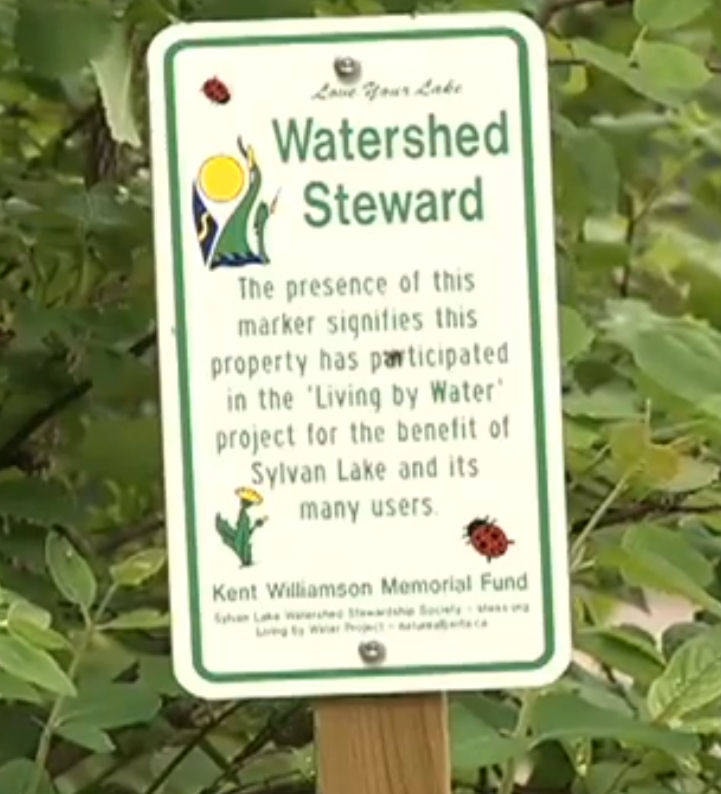By Graeme Strathdee and the SLWSS team
Watershed stewardship, like computer virus software, is a community service that works quietly in the background to ensure that the natural assets that create value for Sylvan Lake are not harmed by human activities. You know when it is working when a notification appears on your screen, or in your lake.
This article, third in the SLWSS series, is about environmental threats to the state of the watershed. We look at official data reported to Alberta Municipal Affairs (MA) to investigate land use changes since 2004. That includes the early period of controversial proposed land use changes that angered the watershed community until today when controlled growth is limited mainly to the Town of Sylvan Lake with its protective urban infrastructure.
Our basic SLWSS concern is that massively increased population will inevitably cause land use disruption, enhance release of nutrients into the lake, cause chronic eutrophication, and algal blooms that degrade property and recreational values. Major examples are everywhere: Lake Winnipeg, Lake Erie, the Gulf of Mexico and the Sea of Japan. The Sylvan Lake watershed is just a microscopic version of those global examples of contaminant transport into waterbodies.
It’s not an abstract concern. The Area Structure Plan of Lacombe County and the growth plan for the Town of Sylvan Lake in combination would insert 70,000 people into the Sylvan Lake watershed. The population today is about 16,000. No one seems to be in charge.
We can understand the risk factors of an expanding watershed population that would increase the transport of contamination off the land and into the lake. Without Outlet Creek flow to Cygnet Lake, Sylvan Lake has become a closed-system bathtub. So, runoff from the surrounding communities stays in the lake. We already see that chloride concentration from winter road salt is increasing.
Cumulatively, diffuse sources of nutrients and contaminants that originate over large areas are important. That explains why land use changes caused by a growing population are the primary threat to the state of the watershed. Between 2004 and 2017, the watershed population grew from about 9500 to 16,000 people according to MA data. Most of that growth has been in the Town of Sylvan Lake (TSL) which added 6312 of those 6500 people, although some of that population lives outside the hydrological boundary and is effectively isolated from the lake.
As indicators of those diffuse-source threats, the number of people and dwellings per hectare (ha) of land are measures of the urbanization of land. In 2017, the TSL recorded 6.5 people and 3 dwellings per hectare. The five Summer Villages (SVs) have both fewer people (1-5) and dwellings (0.5 to 2) per hectare.
Proximity of people to the lake determines the length of flow paths for subsurface- and storm-water and the ease of discharge of contaminants. SV properties are the closest and they occupy about 35 percent of the shoreline and 261 hectares or 2.3 percent of the watershed land. While more remote, the mainly agricultural land in two counties is about 89% of the total watershed area. It is connected to the lake by
the natural drainage tributaries and about 250 km of roadside ditches. Peak flows occur in Spring runoff when high nutrient concentrations from those diffuse sources are discharged into the lake to spin the eutrophication lottery wheel. Incremental land use changes from population expansion will be cumulative and will disrupt the water and nutrient balance of today.
Population growth has an economic impact that increases the risk to property and business assets because of an enhanced probability of chronic eutrophication. The total watershed property equalized tax assessment reached $3.3 billion in 2017. The TSL exceeded $2.4 billion while the sum of all others barely reached $0.88 billion. Both county valuations were less than $0.10 billion as farmland prices control that estimate. Therefore, the TSL has the strongest incentive to enforce stewardship practices that protect the interests of property owners. The SVs also should champion the same cause as valuations of SVs ranged between $1.75 and $3.55 billion per hectare in 2017. All exceeded the TSL valuation of $1.6 billion per hectare so they top the wealth concentration ranking.
Yet two indicators suggest that watershed stewardship is not a top priority in SVs. Our own SLWSS recruiting of mainly lakefront property owners in SVs for Nature Alberta’s voluntary Living by Water project attracted only 15 percent of potential participants. In addition, the Alberta Environment and Parks shoreline video assessments have rated SV stewardship practices as deficient.
We admit a gap in understanding of the state of stewardship in the watershed’s agricultural community. Practical evidence is that the lake has survived the annual nutrient loading cycle by runoff from ag land for more than a century. Nevertheless, our tributary testing shows that nutrient concentrations in Spring ag runoff have been very high, yet seasonal phytoplankton growth in the lake has been stable for decades. Alberta Agriculture’s Environmental Farm Plan certification allows farmers and ranchers to check on their own practices and to demonstrate responsible care of the land.
In summary, like that computer virus detector, the Stewardship Society continues to lurk in the background eagerly waiting to quarantine watershed threats. Read more about us at https://slwss.org.
